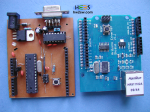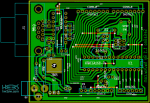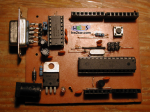
Finally we've got Serialino on the road.
Two tests will be shown, about the simple LED blinking, and the code to drive an ethernet board put on it.
Just a quick note: Serialino is already burnt with a ATMega328p compatible bootloader.
This will ease any code uploading.
Won't it?
Or not?
Not so indeed, or not the same like we feel working with a factory-made Arduino board.
The reason is that communication between Serialino and PC could fail under some undetermined conditions.
A very common problem that affects many home-made Arduino clones.


